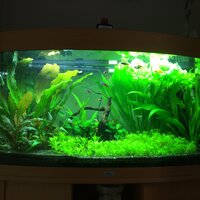Soilwork
Member
- Joined
- 22 Nov 2015
- Messages
- 559
I found this article
 aquariumscience.org
aquariumscience.org
there are very strong claims based on ‘scientific experiments’ that it isn’t possible to have denitrification occur in an aquarium or if there is, some criteria first need to be met in order for it to occur that is very unlikely.
When I tore my soil substrate tank down years ago. I had to leave the room because of the rotten egg smell that was released. I assumed this to be hydrogen sulphide on the substrate. I remembered from Diana Walstads ‘Ecology of the Planted Aquarium’ that hydrogen sulphide production occurred at a lower redox potential than denitrification, so if I had hydrogen sulphide production it would stand to reason I also had areas where denitrification was possible and was likely occurring.
any thoughts?
Regards
CJ
14.2.4. Anaerobic Myth in the Aquarium
Anaerobic or anoxic conditions simply do not occur in the aquarium.
 aquariumscience.org
aquariumscience.org
there are very strong claims based on ‘scientific experiments’ that it isn’t possible to have denitrification occur in an aquarium or if there is, some criteria first need to be met in order for it to occur that is very unlikely.
When I tore my soil substrate tank down years ago. I had to leave the room because of the rotten egg smell that was released. I assumed this to be hydrogen sulphide on the substrate. I remembered from Diana Walstads ‘Ecology of the Planted Aquarium’ that hydrogen sulphide production occurred at a lower redox potential than denitrification, so if I had hydrogen sulphide production it would stand to reason I also had areas where denitrification was possible and was likely occurring.
any thoughts?
Regards
CJ



